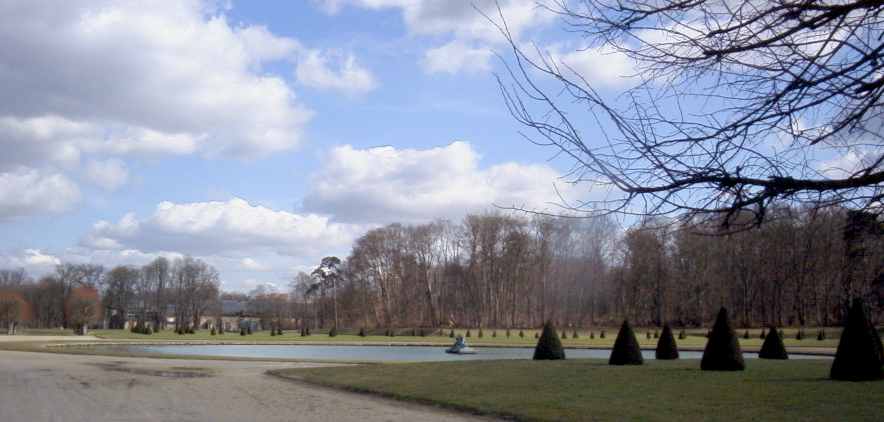
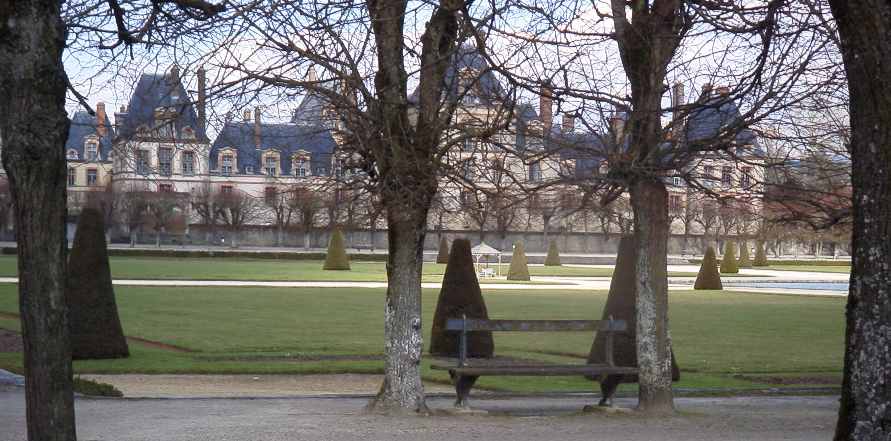
Walking from East to West, we explored the English garden, the Carp Pond, and then moved into the formal French garden called the Parterre. Here's a long shot taken from the west of the North exposures (outsides) of the Kitchen courtyard at right, the Oval courtyard in the center, and the Cour de la Fontaine at the far left:
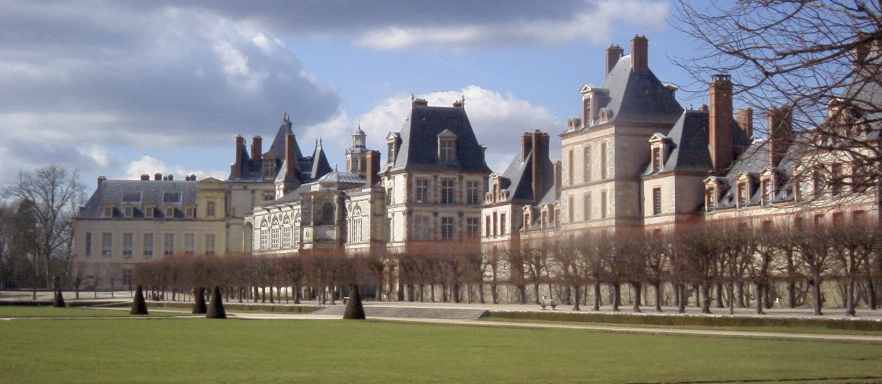
Note the distintinctive trademark of the formal French garden as all the bushes have been processed by a giant pencil sharpener.
These gardens were redesigned under Louis XIV by an up-and-coming baroque landscape architect called Andre Le Notre. He was born in our neighborhood as his father was the head gardener at the Tuileries garden. Andre later laid out the grand axis of the Tuileries that was eventually extended past the Arc de Triomphe through La Defense to our far west. He went on to do the most famous gardens in the world at Versailles for the same king. The far (Northern) edge of the Fontainebleau Grand Parterre contains one of two elaborately landscaped fountains. This one is called the Romulus basin after the sculpture in its center (which you can't make out).

The garden starts at the road which leads to the first entrance to the castle, called the Golden Entrance (1528). Here are successive views of the approach to that entrance starting with the long approach through the Parterre garden:
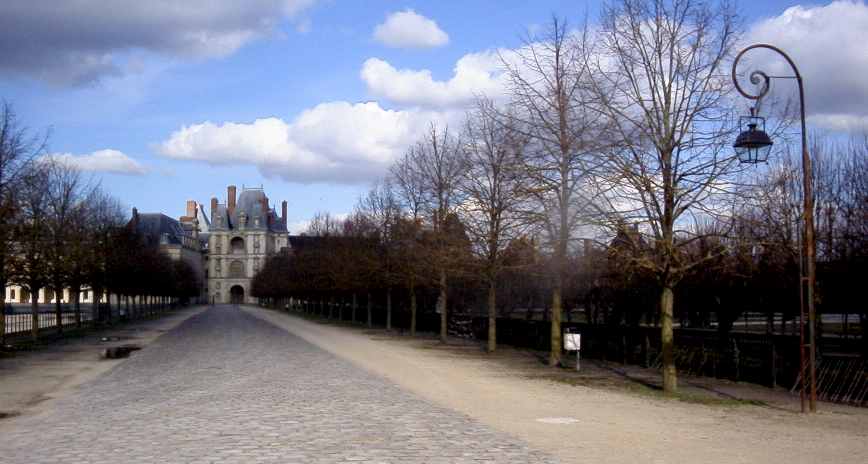
Here's a different angle showing the ballroom and the chapel on the right:
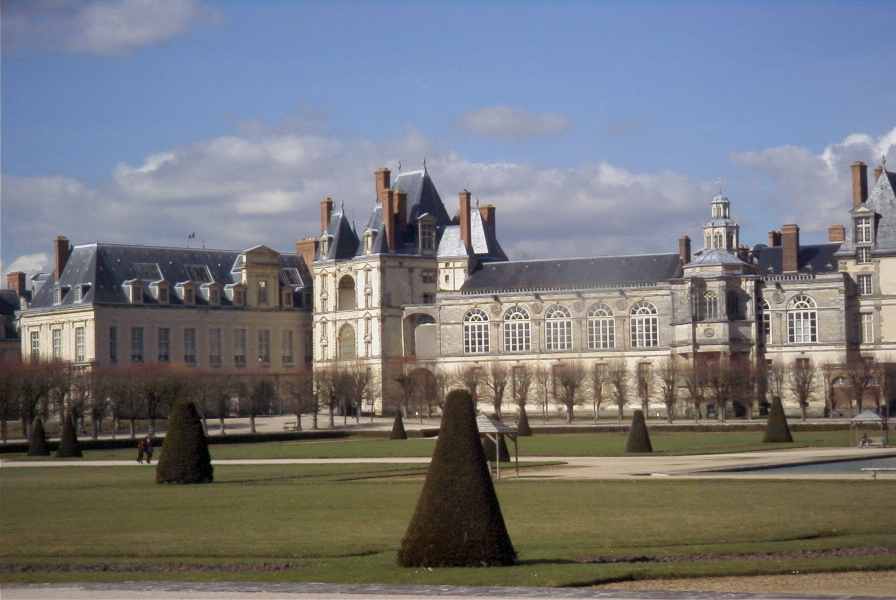
Next we have a full frontal shot with the mansard roof, golden bay window, and Italian loggia at the top in homage to the southern Renaissance architects who designed this gate for Francois I:
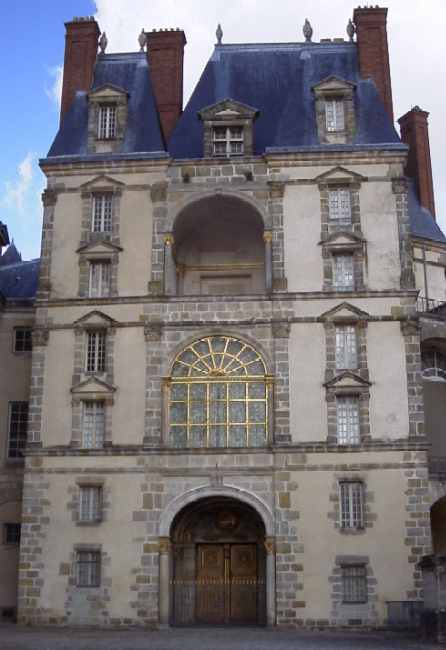
And a closeup:
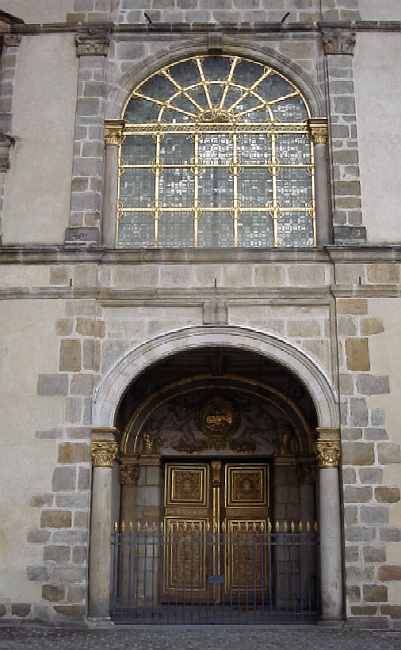
Behind the golden bay window lies Madame de Maintenon's suite. I believe that she was the commoner mistress of Louis XIV whom he secretly married when Marie Therese died in 1683.
In front of the Parterre extend long sections of the palace. Here's a closeup of the ballroom to the left and the Saint-Saturnin chapel. (We have to tell you which chapel because there are, of course, at least two):
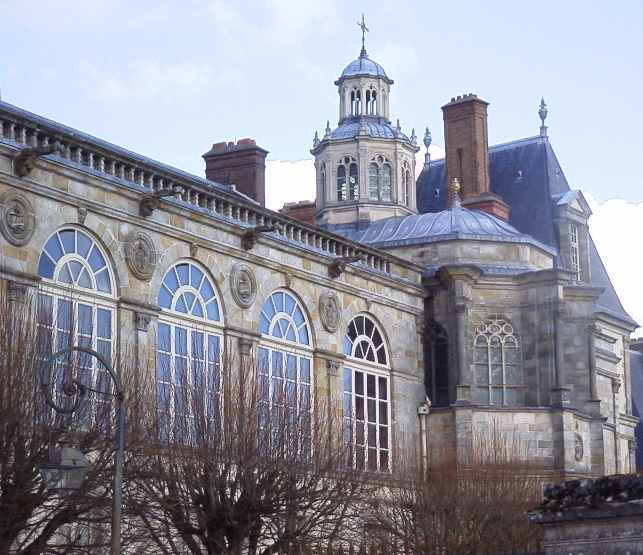
Reversing directions, we see the fountain closer to the palace called the Tiber basin. Its statue was melted down during the revolution so you see a copy here (if you can make it out at all):
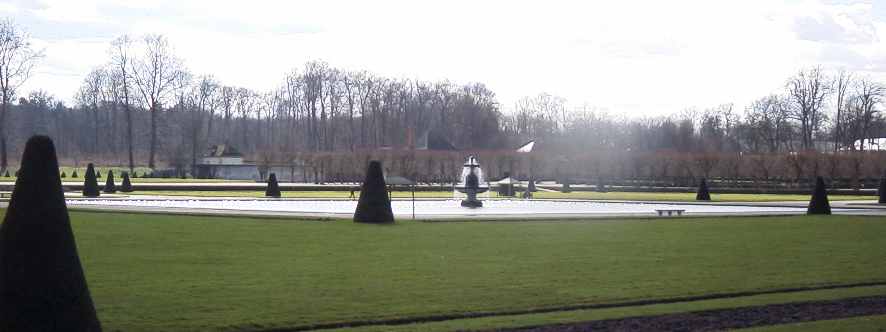
A later entrance was built by Henry IV and titled the Dauphin's Entrance -- also called the Baptistery Entrance, so named because Louis XIII was baptized just beyond it in the Oval Courtyard.
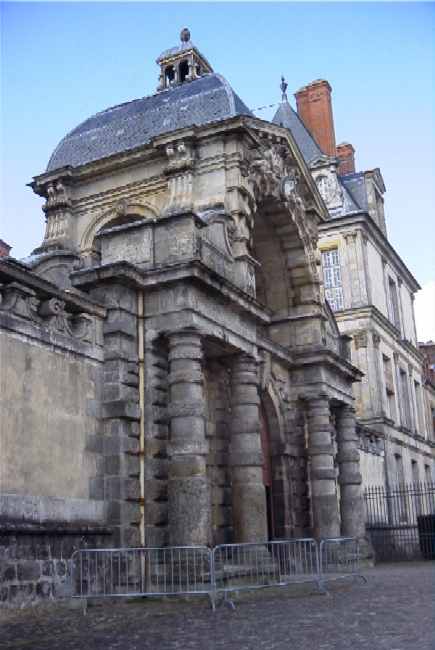
The Baptisterre gate fronts the first courtyard built on the foundations of the original medieval castle, called the Oval Courtyard. It was locked but here's a shot through the gate:
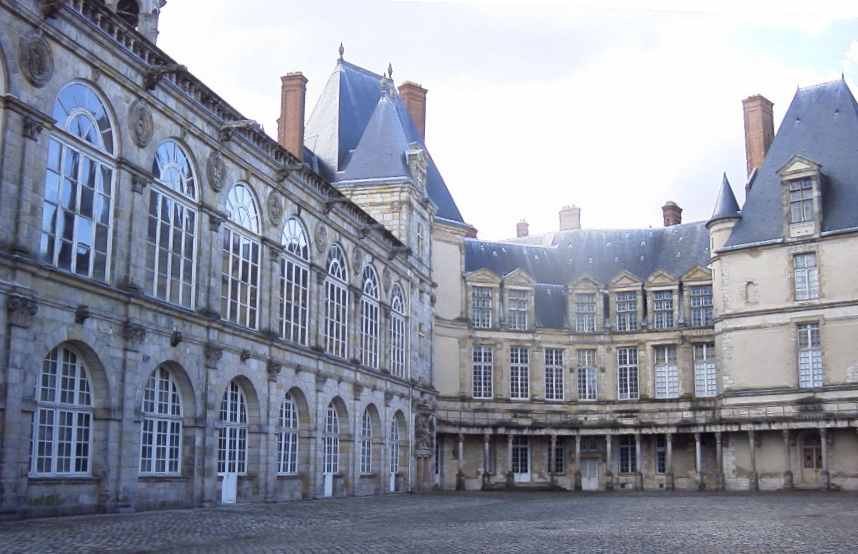
You may be able to tell that we don't quite have an oval here. At right is the old square shaped castle keep from the 12th century when castles were for protection, not ostentation. Note the ballroom on the left.
To the east of the baptistery gate lies the alternating high and low buildings of the Kitchen or Henri IV courtyard. These buildings housed the offices pantries and living quarters. Here's the Parterre side of those austere buildings:
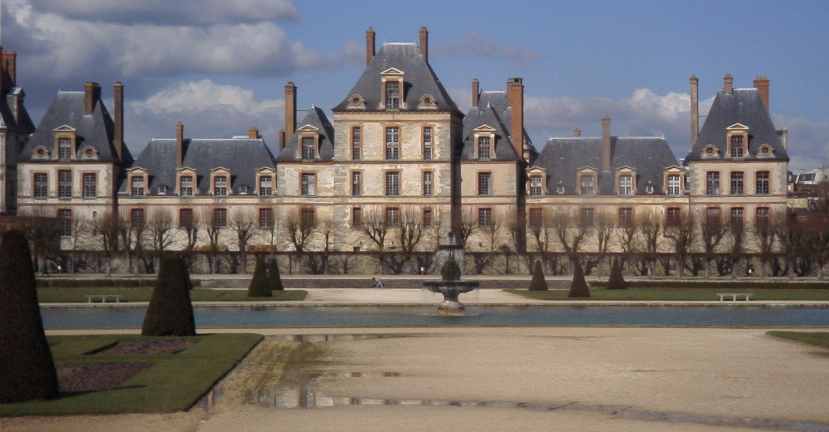
Somewhere in Fontainebleau was NATO headquarters before the French threw them out. I think it was in the Kitchen court but I can't verify that.
The inside of the Kitchen Courtyard was locked and the buildings look in need of repair. Here's a shot we managed to get through the locked gate. Note what looks like an abandoned car in front:
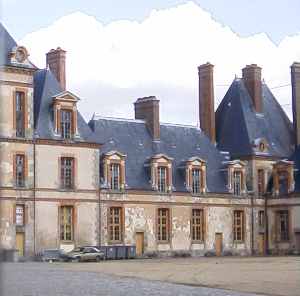
The Parterre ends with the Louis XIV's 1200 meter canal, first filled in 1609 but completely restored in the 19th century. As you can see, the red capped trees are about to spring into bloom.

Next we wandered back to the latest entrance to the palace, the White Horse Courtyard. Please join us by clicking here:
Where do you want to go today? Here's a few choices:
